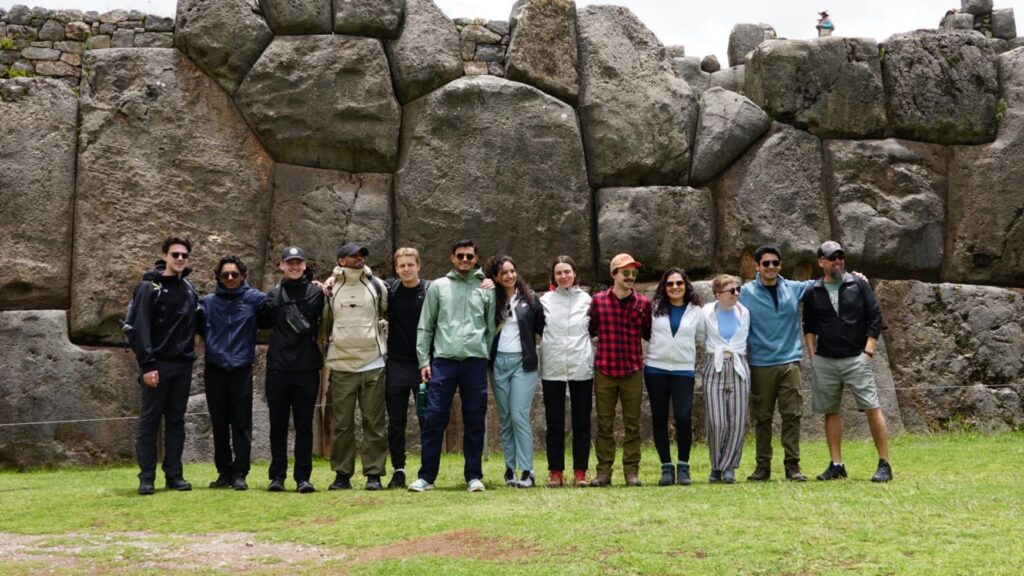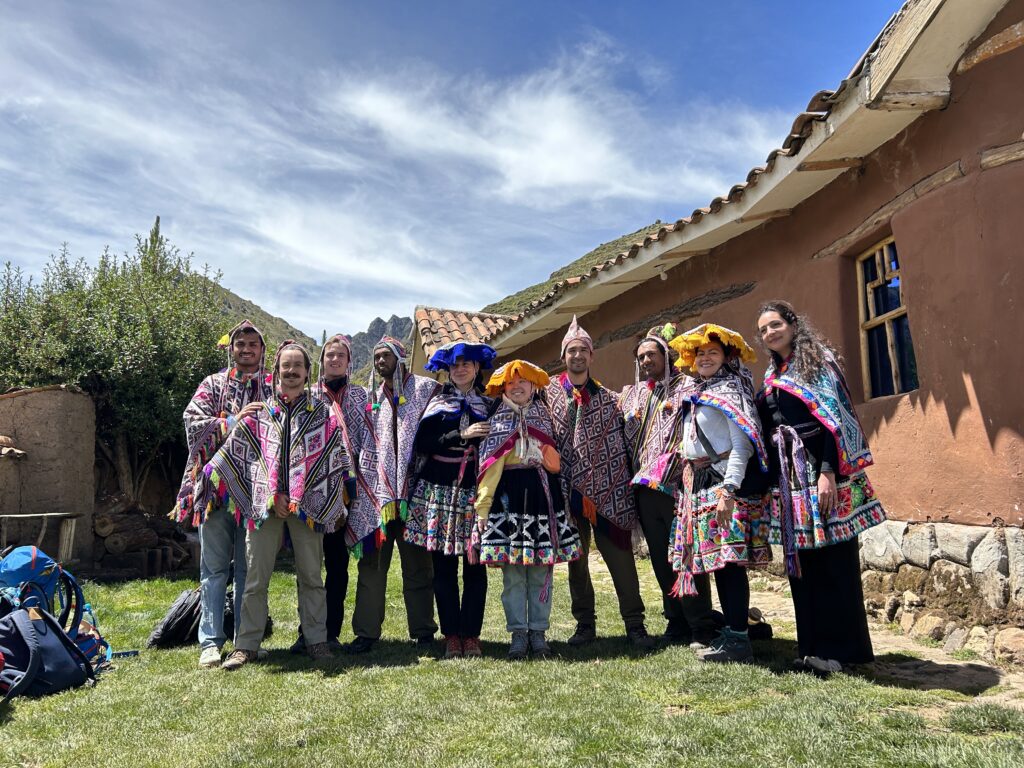“Indigenous Pathways” film documents Peru Option Studio
October 8, 2024
For three weeks last February, a group of Carleton University Master of Architecture students travelled to Peru as part of an Indigenous Option Studio, led by Assistant Professor K. Jake Chakasim.
Their visit was documented in a 16-minute film, Indigenous Pathways, which has been selected as part of the Architecture & Design Film Festival in Toronto, Vancouver, and Chicago. It will be screened in Toronto on October 25.

The Peru Option Studio had invited filmmaker Darcy Muenchrath to follow the students and document their land-based learning experience across Cusco, Potato Park, and Machu Pichu. Chakasim, a Cree from Northern Ontario, is the film producer.
“The use of documentary film is important both as an educational tool and as a visual argument for the preservation and emergence of Indigenous knowledge, not just for Indigenous people, but as a tool for Carleton University’s Indigenous outreach and recruitment,” he says.
“Following the lived experience of the students will allow students and other educators, both within our school and beyond it, to see how the transmission of Indigenous knowledge happens.”
The Peru Option Studio is a continuation of the Azrieli School of Architecture & Urbanism’s effort to promote understanding of territory, ecology, and culture of global Indigenous peoples through the lens of architecture and Indigenous planning.
“As Canadian architecture schools strive to reconcile and achieve parity with this country’s Indigenous Nations, what is required is design sensibility informed by social, cultural, and political awarenesses about the land on which architectural learning takes place,” explains Chakasim.
“Designing for and with Indigenous communities requires an adaptive acuteness to the landscape where Indigenous knowledge and Indigenous pedagogies are situated.”


The following students went on the trip: Luca Corazza, Sebastian Diaz, Keagan Fowler, Reem Khanafer, Gabriela Rodriguez Perez, Dylan Rachpaul, Juan Ramirez, Lauren Sharpe, Ksheel Shetty, Sam Smith-Lane, Micaela Stokes, and Marco Vukovic.
“I do feel that land-based learning is most effective when you are in the land, when you are experiencing the environment of a particular place,” said student Gabriela Rodriguez Perez, who has South American roots.
“What we have learned is that, even with their limited resources they are able to live a very fulfilling and complete life because of their knowledge they handed down through centuries about the land.”
The visit, from February 2 to 25, was the first of a three-year partnership with the Para Para community of the Potato Park region, a United Nations Heritage Site. Potato Park is managed by a collective of Indigenous communities who employ traditional knowledge and harvesting methods to restore agrobiodiversity, adapt agricultural systems to climate change, and strengthen cultural identity and sovereignty.
The group followed a portion of an ancient Indigenous pathway, the Inca Trail — a migration path for animals and human knowledge since time immemorial, which is now confronted with climate adaptation and climate migration. Among their activities, the students helped build a greenhouse.
“Learning by doing, land-based experience, guided by local Indigenous knowledge holders, are the core objectives,” says Chakasim. “In this way of learning, cultural and language differences are not barriers. On the contrary, they open paths and possibilities for a different, deeper, and more experiential approach to learning.”
Keagan Fowler, a non-Indigenous student in the studio, reflects on his experience by saying: “It’s really shaped how I think about land-based learning, that you need to be receptive of what a local community does on that land, what exists there, what can be used there.”
The students later applied their cultural lessons to a real-world project and collaborator, the Wabano Centre for Aboriginal Health in Ottawa, Ont.
“This studio takes up the challenge of designing across difference,” notes Chakasim. “This is the fundamental premise of the course, learning and teaching alongside Indigenous people who are different from us.”

The Indigenous Option Studio, now in its third year, reflects the school’s commitment to Carleton University’s Kinàmàgawin Report – Learning Together.
The studio takes its direction from Call to Action #19: “Whereas land-based practices are critical to the (re)production of Indigenous culture and identity. Furthermore, whereas Indigenous land-based practices embody highly complex knowledge systems and practices — we call for opportunities for Indigenous and non-Indigenous students to participate in land-based learning.”
Indigenous pedagogy has been practiced for millennia, but bringing it into institutions across Canada is new, says Associate Professor Kahente Horn-Miller, Carleton University’s Associate Vice-President, Indigenous Teaching, Learning and Research. She travelled to Peru with the students.
“What is most important is the building of community, community engagement, the sharing of land-based learning knowledge in a way that brings people together,” says Dr. Horn-Miller. “This is part of what we’ re doing here at Carleton. We are pushing things in terms of Indigenous pedagogy. We are showing you how to do it.”